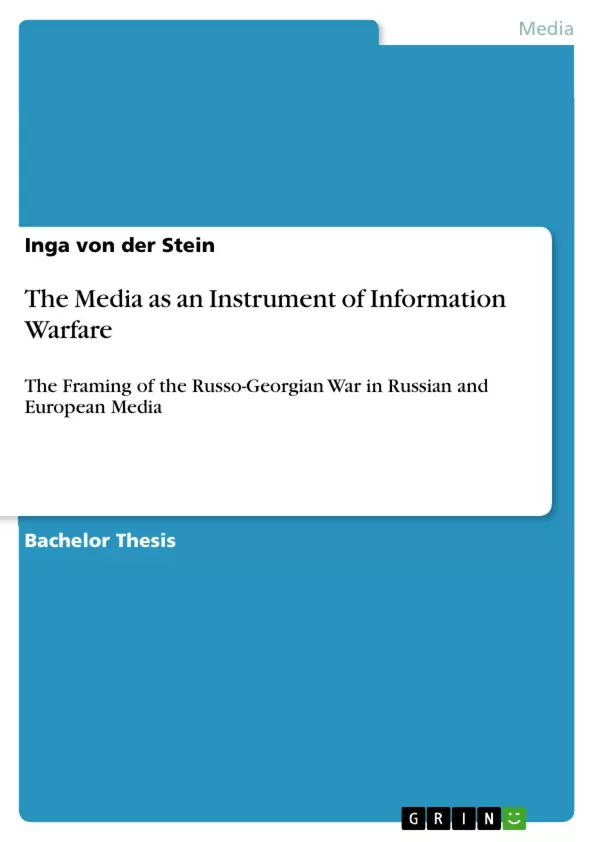The puzzle this paper aims to solve is twofold: firstly, this study investigates how Russian and European media were used as an instrument of information warfare. Secondly and in more depth, it is examined to what degree the framings of the Russo-Georgian War in Russian and European media constitute information warfare. Here, the first question serves as to provide the necessary foundation on which the answering of the second one can build on.
The relevance of this paper is to contribute to the discussion on media bias on the Russian but also on the European side. While European media such as The Economist, The Guardian and the BBC claim that Russia is waging an “Information War” against the West, in EU countries such as Germany, there is a growing dissatisfaction of a considerable amount of people with the media coverage on Russia. By examining Russian and European media on the use of propaganda, this paper aims to address these concerns.
Inhaltsverzeichnis (Table of Contents)
- INTRODUCTION
- STATE OF THE ART
- Literature Review
- The "new" wars in the Information Age..
- The old vs. new wars debate..
- Media and Propaganda Warfare.
- The relation between media and government.
- METHODOLOGY.
- FINDINGS AND DISCUSSION
- CONCLUSION
Zielsetzung und Themenschwerpunkte (Objectives and Key Themes)
This paper aims to investigate how Russian and European media were utilized as a tool of information warfare during the Russo-Georgian War. The study examines the extent to which the framing of this conflict in Russian and European media constitutes information warfare. The paper delves into the theory of "new" wars in the Information Age, specifically focusing on the role of communication technologies in warfare. The paper also examines the relationship between media and the government within the context of information warfare.
- The role of media in contemporary warfare.
- The concept of "new" wars and their characteristics.
- The impact of propaganda techniques on media framing.
- The relationship between government, media, and public opinion.
- Comparative analysis of Russian and European media coverage.
Zusammenfassung der Kapitel (Chapter Summaries)
- INTRODUCTION: This chapter explores the intertwined nature of war and mass media in modern conflicts, particularly the role of media in shaping public opinion and influencing political decisions. It establishes the research question, focusing on the use of Russian and European media as instruments of information warfare during the Russo-Georgian War.
- STATE OF THE ART: This chapter provides an overview of existing research on media framing in conflicts involving Russia, particularly focusing on the Russo-Georgian War. It discusses various approaches and scholars who have analyzed media coverage of Russian-related topics. The chapter then introduces the concept of "new" wars in the Information Age and highlights the debate between old and new war paradigms. It explores the role of communication technologies, media and propaganda warfare, and the relationship between media and the government.
- METHODOLOGY: This chapter outlines the methodology employed in the study. It details the sampling and case selection process, introduces the seven techniques of propaganda, and explains the methods used for data collection, analysis, coding, and measurement.
- FINDINGS AND DISCUSSION: This chapter presents the findings of the study, analyzing the media coverage of the Russo-Georgian War in four selected broadsheets – the Moscow Times, Russia Beyond the Headlines, The Daily Telegraph, and Süddeutsche Zeitung. The analysis focuses on the identification and application of propaganda techniques in each of these media outlets.
Schlüsselwörter (Keywords)
The primary keywords and focus topics of this paper include information warfare, "new" wars, propaganda, media framing, Russo-Georgian War, Russian media, European media, public opinion, and the relationship between media and government.
- Quote paper
- Inga von der Stein (Author), 2016, The Media as an Instrument of Information Warfare, Munich, GRIN Verlag, https://www.grin.com/document/337247



